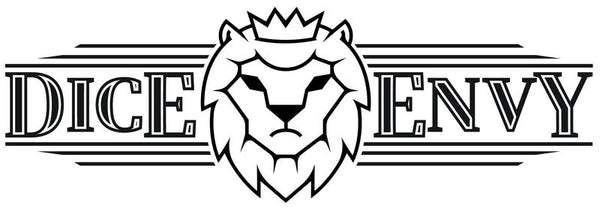Dice Envy Blog


What the %!#@ are Caramel Cortados for Bad Kids?!
- upside-down half caff macchiato with two shots, minus one shot- hot chocolate with a shot of decaf- peppermint mocha- 3x iced tea-based cortados with no milk at all, add...
What the %!#@ are Caramel Cortados for Bad Kids?!
- upside-down half caff macchiato with two shots, minus one shot- hot chocolate with a shot of decaf- peppermint mocha- 3x iced tea-based cortados with no milk at all, add...


A Starry Eyed Stat Block
I'm convinced you could run an entire campaign with nothing but Mads Mikkelsen characters as NPCs...
A Starry Eyed Stat Block
I'm convinced you could run an entire campaign with nothing but Mads Mikkelsen characters as NPCs...


Favorite Batman Villain Poll
With today's drop basically shouting Poison Ivy, it has us wondering - who is your favorite Batman villain?
Favorite Batman Villain Poll
With today's drop basically shouting Poison Ivy, it has us wondering - who is your favorite Batman villain?

Inventory: A Retrospective
Ever wonder what the inventory system for a major dice retailer looks like? We do, too!!
Inventory: A Retrospective
Ever wonder what the inventory system for a major dice retailer looks like? We do, too!!


Scaly Sudoku
Genevieve Shabnar the gnome armourer has given your party a collection of 16 colorful dragon scales and asked you to thread them into a four-by-four pattern. In return, she will...
Scaly Sudoku
Genevieve Shabnar the gnome armourer has given your party a collection of 16 colorful dragon scales and asked you to thread them into a four-by-four pattern. In return, she will...

Adventure Is Nigh
As some of you may have noticed, we released a collection of four metal dice sets made in collaboration with Second Wind for their hilariously animated D&D show, Adventure Is Nigh.
Adventure Is Nigh
As some of you may have noticed, we released a collection of four metal dice sets made in collaboration with Second Wind for their hilariously animated D&D show, Adventure Is Nigh.

Geiger, Giger, Gygax
Though it is one of the rarer monster damage types you're likely to encounter, acid still poses a serious threat to life and limb (and light armor).
Geiger, Giger, Gygax
Though it is one of the rarer monster damage types you're likely to encounter, acid still poses a serious threat to life and limb (and light armor).

Glow In The Dark Stuff
Glow-in-the-dark stuff is super cool, so we occasionally release some GITD dice like our Poison Cloud 10-piece set or 2025's Trick or Treat Mystery Bag's glowy Infinity d4s. It's even...
Glow In The Dark Stuff
Glow-in-the-dark stuff is super cool, so we occasionally release some GITD dice like our Poison Cloud 10-piece set or 2025's Trick or Treat Mystery Bag's glowy Infinity d4s. It's even...

Nice Shot, SNA! Feat. Zack Williams aka sna_toyz
This month, we've had the absolute honor of being the focal point of Zack William's (@sna_toyz on Insta) lens as a hobbyist toy photographer. We interviewed Zack to find out more...
Nice Shot, SNA! Feat. Zack Williams aka sna_toyz
This month, we've had the absolute honor of being the focal point of Zack William's (@sna_toyz on Insta) lens as a hobbyist toy photographer. We interviewed Zack to find out more...

D&D Moms
It's Mother's Day here in the U.S., so we thought we'd do a quick line-up of some of the more memorable matrons from our favorite 5E campaign books.
D&D Moms
It's Mother's Day here in the U.S., so we thought we'd do a quick line-up of some of the more memorable matrons from our favorite 5E campaign books.

Favorite Martial Melee Weapon Poll
In real life, most of us would feel much better at a safe distance, with a ranged weapon, behind a steel wall or two. However, since dungeon delving is literally the name...
Favorite Martial Melee Weapon Poll
In real life, most of us would feel much better at a safe distance, with a ranged weapon, behind a steel wall or two. However, since dungeon delving is literally the name...

Scrooge McDuck Build
What if Scrooge is casting Etherealness and is therefore able to move through the money pit as a hyper-skilled planeswalker?
Scrooge McDuck Build
What if Scrooge is casting Etherealness and is therefore able to move through the money pit as a hyper-skilled planeswalker?


Four Gods and a Rabbit Riddle
Dionysus, Milil, Sune, and Bast come to a river in the night. There is a bridge, but it can only hold two deities at a time. They have with them...
Four Gods and a Rabbit Riddle
Dionysus, Milil, Sune, and Bast come to a river in the night. There is a bridge, but it can only hold two deities at a time. They have with them...
